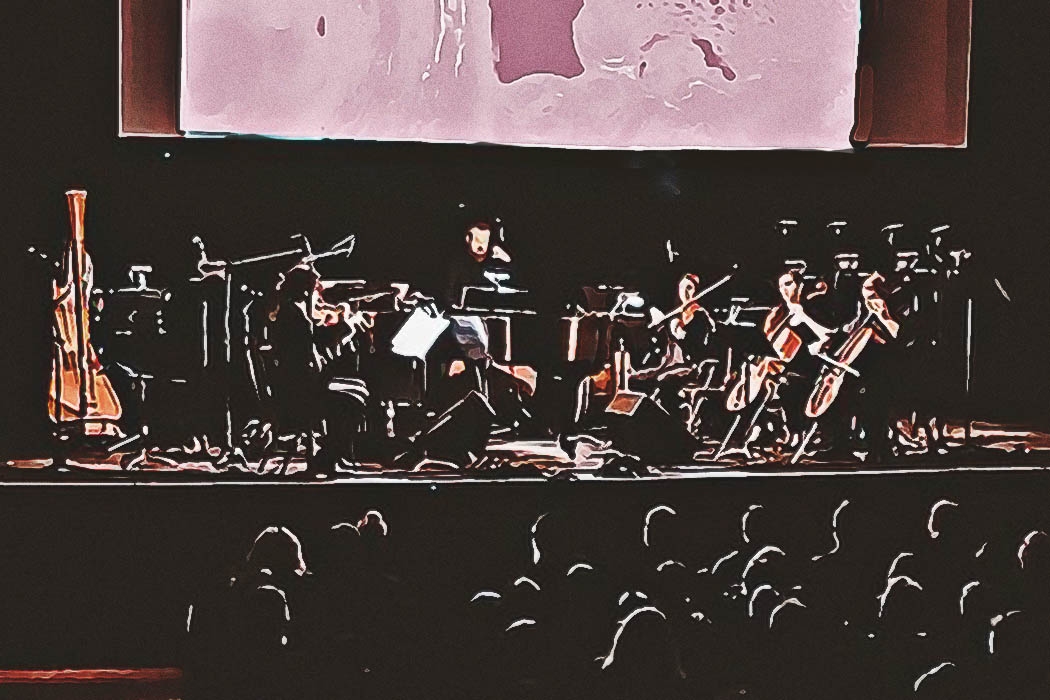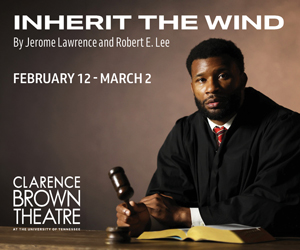Big Ears Festival continues to expand, evolve and surprise, the 2019 edition doubling down on last year’s somewhat unexpected lineup heavy on jazz and new music performers and composers, and more of the Appalachian/old time fare that was more or less ignored in previous years. A few concessions to more pop-ish acts remain, but with the program including the celebration of ECM Records’s 50th anniversary and a ballet, just think of how different this year looks and sounds compared to the inaugural edition 10 years ago.
This evolution is surely a great thing for attendees who welcome surprises and challenges, though I do know several regular attendees who sat this year out due to the few rock, jazz or pop acts on the bill. The Big Ears brand is strong, though, and people travel from all over the world to attend, many purchasing weekend passes before any of the lineup is announced. Stylish Europeans were wandering the streets of downtown Knoxville as early as Wednesday.
I was disappointed Public Cinema’s participation in this year’s festival was relegated to four programs playing on a loop at UT’s Downtown Gallery, as they’ve added a lot to the weekend by bringing some fairly unexpected and challenging film programming. The upside of this was the films screened throughout the month of March, so I was able to see them before the festival began in earnest (well, only a few hours of Wang Bing’s eight and half hour Dead Souls, and maybe I’ll watch more of that over the weekend), and there were less conflicts and tough decisions to be made regarding scheduling.
This year’s festival unofficially began a night early with the ballet Lucy Negro Redux. I am a ballet naif, but deliberately avoided reading too much about it before watching it, which is frankly something I rarely do. But I wanted to approach this work without many expectations. This is how the Nashville Ballet describes it:
“Lucy Negro Redux explores the mysterious love life of literary great William Shakespeare through the perspective of the illustrious “Dark Lady” for whom many of his famed sonnets were written. Based on the book by Nashville poet Caroline Randall Williams, the contemporary ballet explores themes of love, otherness, equality and beauty as the narrator embarks on a journey to discover her own power and worth. Featuring an original score by Grammy Award-winning artist and MacArthur “Genius” Grant recipient Rhiannon Giddens with spoken word performed by Williams, Lucy is an imaginative drama brimming with wit and relevancy.”
Knowing only the above and not sure what to expect, it turned out to be one of the more welcome surprises I’ve experienced at any Big Ears. The work excels on all levels, the spoken word poetry, minimal music, costumes, choreography and dancing all seemed wholly original (at least to someone whose experience of ballet is primarily through The Red Shoes.) Giddens and Francessco Turrisi’s minimal score calls on old-time, blues, jazz and African rhythms, the dances reference 20th century popular styles as well as modern dance and classical ballet, and Williams is an excellent narrator and guide.
What resonated most, thinking about it the next day, was how Caroline Randall Williams’ curiosity about and investigation into Lucy as a woman of color inspired this complex piece. A lot of hard work and creativity obviously went into Lucy Negro Redux, and it’s worth remembering the spark was given by an act of imagination, an argument for interrogating texts and received wisdom, even when no “proof” of a supposition may be forthcoming.
THURSDAY
I was more in my element with Rachel Grime’s elegant folk opera The Way Forth. A musical score for piano, harp, string section, percussion, choir and spoken word narration, accompanied by a film, the work explores the history of several generations of her Kentucky family, incorporating old photos, letters and oral histories, including the stories of enslaved people and their descendants. One of the strongest aspects of the work is that it doesn’t attempt a straightforward narrative, or even try to resolve any of the questions it puts forth. Rather, Grimes presents a history of many people, fragmented, much like the way memory works. I would imagine many people who grew up in the rural Southeast would be stirred by the combination of images, names, places and memories presented, especially as many of those memories were voiced in strong Southern accents, something you don’t often hear in such tony productions.
Kukangendai were not quite as loud or heavy as I expected, but maybe that was just hearing the Japanese trio in the hangar-like space of the Mill and Mine. They are a precision unit, working extended minimalist guitar-bass-drum pieces in a manner that seemed more teletype rock than math rock. Which is not to say they sounded entirely like machines. There were shades of funk throughout, though the band never quite strayed from their calculator boogie to a full on groove. Immensely impressive on a technical level, the repetition of the short, staccato notes did make me a bit twitchy.
Then I saw something I never thought I’d live to see: Matt Morelock leading an old-time jam session reminiscent of early Jackie-O Motherfucker or a sleepy Phil Zone. Advertised as “Out Explorations of Traditional Tunes,” it basically translated to the jammers running old-time instruments through effects pedals. Morelock is a music teacher, so he couldn’t help but have a few simple note charts and call out changes throughout tunes like “Wildwood Flower,” but when everybody let loose and went OUT it was indeed strange and weirdly beautiful. Greg Horne was up there, as were John Phillips and Bob the downtown saw player. Cindy Lou Douglas brought her fiddle, and musicians in the crowd grabbed instruments from the Jig and Reel wall throughout the night. When I left there were maybe a dozen people strumming and picking and sawing and bowing away, and they had more than two hours to go. Cool and unexpected to see some serious, professional musicians take risks and make some noise, New Weird America 15 years after the fact, but better late than never. It was lovely.
In contrast to not having heard anything from Lucy Negro, The Way Forth, or Kukangendai before attending their performances, I had been listening to Moor Mother (Camae Ayewa) quite a bit the past few months, and was highly anticipating her show. She, too, surprised, starting out accompanied by a violinist/singer and a much more subdued sound than many of her recordings would indicate. It was to great effect, however, as the first lengthy piece built on the growing righteous indignation and anger of her spoken word performance, and she finally let loose with a flurry of beats and noise, alternating between singing and spoken word for the remainder of the set. A sizable chunk of the crowd checked out fairly early, maybe not expecting such a harsh assessment of contemporary America. And it is always a bit awkward seeing artists of color calling for revolution to an audience of mostly white people who paid nearly $300 to attend a music festival, but that’s nothing new and likely won’t change any time soon. But Ayewa most definitely walks it like she talks it,doing great work in underserved communities in her native Philadelphia, believing art and music are an essential part of social change and community building. Hopefully her words and music inspired those who stayed.
And there’s this: It was in the middle of Moor Mother’s set that it occurred to me that after years of attending music festivals, seeing Lucy Negro Redux, several Beatrice Gibson films, Rachel Grimes’ performance with primarily female musicians, the great percussionists Susie Ibarra and YoshimiO, the open Jig and Reel jam session where several women joined in and Moor Mother and her violinist, this is the first day I’ve seen more women than men perform at any festival.






